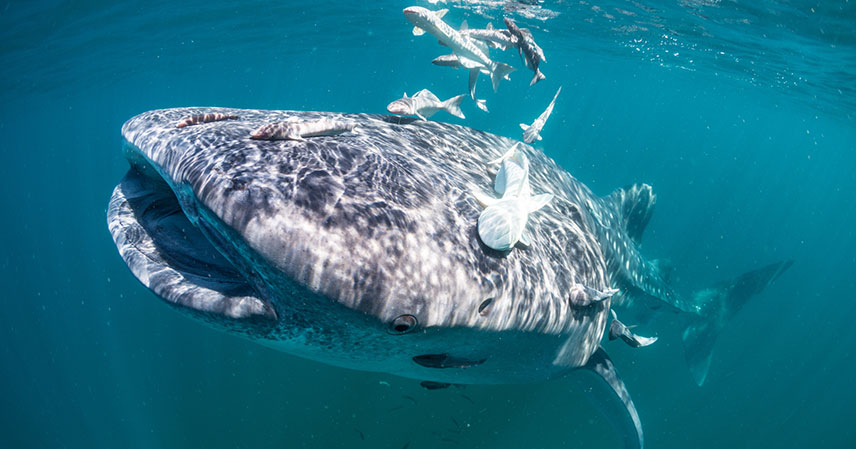For centuries, scientists have looked to nature for inspiration, and now, a team of MIT researchers is doing just that. They’ve unlocked the secrets behind the remarkable adhesive abilities of remora fish, paving the way for groundbreaking advancements in adhesive technology. This tiny fish, known for its ability to cling to even the fastest marine animals, holds the key to creating adhesives that work even on wet surfaces – a challenge that has plagued scientists for years.
The remora’s unique adhesive mechanism is a testament to the power of natural selection. By studying this biological marvel, scientists hope to create revolutionary new adhesives with applications ranging from underwater exploration to medical technology. Let’s dive deeper into the fascinating world of remora fish and their surprisingly sophisticated adhesive disks.
The Remora’s Amazing Adhesive Disk 🐟
Remora fish, those small creatures often seen attached to larger marine animals like sharks and whales, possess a remarkable adaptation: a specialized adhesive disk on their heads. This disk allows them to securely attach to their hosts, even in turbulent waters, defying the common problem of adhesives failing on wet surfaces.
Unlike conventional adhesives that rely on chemical bonds, the remora’s adhesive system is a masterpiece of bioengineering. It combines a robust bony structure with flexible soft tissue and microscopic hooks, allowing for a secure and adaptable grip. This remarkable system allows them to withstand strong currents and the movements of their much larger hosts.
How the Adhesive Works: A Closer Look at the Mechanics 🔬
The remora’s adhesive disk is actually a modified dorsal fin, supported by a unique bony structure called an intercalary backbone. This backbone provides a rigid framework for the lamellae – specialized bony plates covered in hundreds of tiny, backward-facing spines called spinules. These spinules are crucial for creating a strong mechanical grip.
The entire disk is further enhanced by soft tissue compartments that are open at the top. This ingenious design allows water to flow through the system, preventing the formation of air bubbles that could disrupt the adhesion. The combination of the rigid bony structure, the microscopic hooks, and the water-permeable soft tissue creates an incredibly effective adhesive system.
Reverse Engineering Nature’s Innovation ⚙️
MIT researchers have meticulously studied the remora’s adhesive disk, aiming to replicate its effectiveness in synthetic materials. Their research involved detailed microscopic analysis and advanced computational modeling to understand the complex interplay of the various components.
The goal is to create bio-inspired adhesives that can overcome the limitations of current technologies. Imagine adhesives that work reliably underwater, on wet skin, or in other challenging environments. This research has the potential to revolutionize numerous fields, from medical devices to underwater robotics.
Potential Applications and Future Implications 🚀
The potential applications of a bio-inspired remora-like adhesive are vast. In medicine, such an adhesive could lead to improved wound closures, particularly in wet environments. It could also revolutionize the creation of non-invasive medical sensors and drug delivery systems.
In engineering, this technology could be used to create stronger and more durable underwater structures, improve the performance of underwater robots, and even lead to the development of self-healing materials. The possibilities are truly limitless, showcasing the power of biomimicry in solving complex engineering challenges.
Key Takeaways 🔑
- Remora fish utilize a highly effective adhesive disk to attach to large marine animals.
- The disk’s design combines a rigid bony structure with flexible soft tissue and microscopic hooks for a strong grip.
- MIT researchers are reverse-engineering this system to create new adhesives that work on wet surfaces.
- Potential applications are widespread, including medical devices, underwater technologies, and self-healing materials.
The remora fish’s adhesive disk serves as a powerful example of nature’s ingenuity. By studying and mimicking its design, scientists are poised to create revolutionary new adhesives with far-reaching implications across various fields. This research, much like the study of how peacock feathers create color like a laser, highlights the importance of looking to the natural world for innovative solutions to complex technological challenges.
Source: New adhesive surface modeled on a remora works underwater



